Space is a luxury—even when you technically have enough of it. Two homes in different parts of the country just mean twice the rooms that aren’t quite big enough, twice the gear to manage, and the same expectation that movies and music should hit hard no matter where you drop your bags. Not everyone wants (or has room for) a full-blown home theater with racks of equipment and big floorstanders staring at them. A lot of people are going the CI route with in-wall and in-ceiling loudspeakers, and I’ve found myself appreciating that approach more than ever. Hide the hardware, keep the experience.
That’s exactly where the Anthem MRX SLM steps in. This ultra-slim A/V receiver comes from a brand that’s spent decades proving it knows how to build some of the best-engineered AVRs on the planet. Anthem’s build quality is tank-grade, their codec and surround-format support is always kept current, and their gear is tested with MartinLogan, Paradigm, and now GoldenEar—because they all share the same DNA. It’s not flashy. It’s not meant to be. It’s built to last and built to disappear.
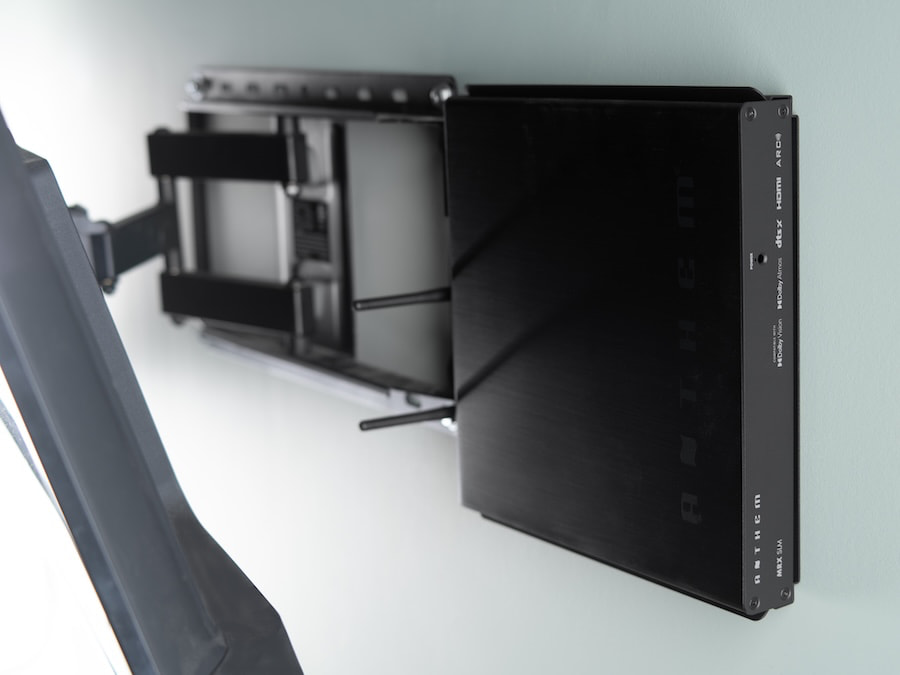
The MRX SLM is for the person who wants to tuck a real AVR behind a flat-panel TV, inside a cabinet, or straight into the wall, and then run the whole system from the app without thinking about it again. The question is simple: does this stealth approach deliver the full Anthem experience without compromise?
Rack It: Where the MRX SLM Actually Belongs
Most people are going to look at the MRX SLM and immediately tag it as a CI product—and they’re not wrong. This thing was built to disappear into walls, cabinets, and tight spaces where a normal AVR simply won’t fit. But it also happens to be fully rack-mountable, which makes it a very easy sell for installers who want a clean, organized setup without sacrificing performance.
That said, let’s be honest: most dealers will still steer you toward one of Anthem’s full-size high-end AVRs or an AV processor paired with multi-channel amps if you need serious power or you’re juggling a pile of sources. That’s their bread and butter. The MRX SLM is the alternative for people who want the Anthem experience but don’t have the space—or the patience—for the traditional stack.
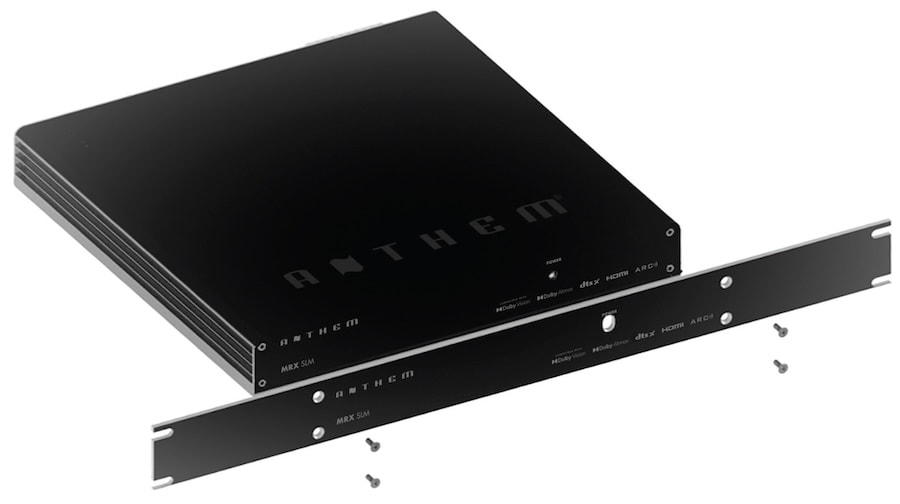
Because it comes in under $1,300, the MRX SLM also lands in a sweet spot for multi-room installs. For dealers building out cabins, guest suites, bedrooms, or secondary zones where the homeowner wants real surround sound but absolutely zero visible hardware, this thing is a gift.
You get Dolby Atmos, DTS:X, AirPlay, Spotify Connect, and the rest of the modern streaming toolbox in a chassis you’ll never actually look at. For clients who want movies in one room, music in another, and equipment in none, the MRX SLM is one of the most cost-effective “set it and forget it” high-end solutions available.
Integration & Control: Built for CI, Flexible for Everyone
Robust integration is one of the MRX SLM’s real strengths. Anthem built this thing to slide into modern control ecosystems like it’s sneaking into a crime scene—Savant, Crestron, Control4, URC, RTI, ELAN, the whole CI lineup. With full IP control, installers can stitch an entire room together so cleanly you’ll forget which box is actually running the show. One app, one interface, no drama.
Now, here’s the Bosch-style confession: I’ve never used any of those systems in my own home, and there’s a reason. I don’t trust my family—sad but true—not to blow something like this up. They’re all masters of their own universes and would shiv you in the shower for touching their iPhones, but when it comes to anything with cables, they suddenly look at me like I’m the resident IT department. I can’t even get two college students to toss their Wawa garbage or drop laundry down a chute. Hand them control of a fully automated HVAC-lighting-security-shades ecosystem? Snigger. Hard pass.
But for households where people can be trusted—or where the installer wisely locks down the interface—the MRX SLM plays beautifully with modern home automation. It’s built to disappear physically and digitally, letting smart-home systems handle everything behind the curtain. Exactly the kind of quiet, competent CI gear that does the job without demanding credit.
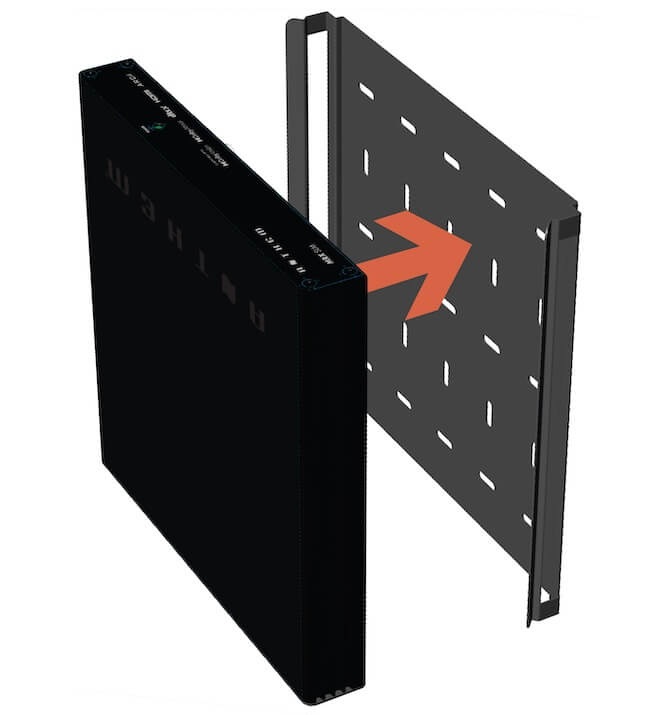
MRX SLM Specs: Compact Footprint, Full-Blown Performance
The MRX SLM uses a Class D amplifier stage, which is a big part of why it’s so compact, cool-running, and efficient. Class D isn’t the old punchline it used to be; Anthem knows how to implement it properly, and in a slim CI-focused design like this, it’s the only sensible choice. It delivers clean power without turning your cabinet into a toaster.
Anthem rates the MRX SLM with a frequency response of 20 Hz to 20 kHz within ±0.5 dB. Translation: it stays neutral and honest across the entire audible range whether you’re feeding it a full-scale digital source or a standard 1V analog input. No tonal weirdness, no hidden EQ tricks, just straight-ahead accuracy.
It’s stable with any speaker 4 ohms or higher, which covers basically every in-wall, in-ceiling, on-wall, or compact bookshelf speaker someone would pair with this kind of stealth AVR.
Power-wise, the MRX SLM delivers 50 watts per channel into 8 ohms with two channels driven, which is plenty for most in-wall and in-ceiling installations. Drop the load to 4 ohms, and it steps up to 92 watts per channel, giving you extra headroom for more demanding speakers.
For a chassis this thin, that’s genuinely solid. More than enough for bedrooms, cabins, dens, guest spaces, or any CI zone where you want Atmos/DTS:X immersion but aren’t trying to reenact a Marvel battle scene at IMAX levels.
Physically, the MRX SLM is barely thicker than a hardcover book—1.5 inches tall without the feet—and weighs only 6.6 pounds (3.0 kg). The width is 11 inches (a touch more with the rackmount kit), and it slides behind a TV, into cabinetry, or straight into a rack without breathing hard.

Features: Compact Size, Full-Fledged Capability
The MRX SLM may be tiny, but Anthem didn’t skimp on the toolkit. It’s a full 5-channel AVR with amp matrixing, making it flexible enough for small Atmos systems, bedroom theaters, or CI zones where you’re mixing in-wall and in-ceiling speakers. Bass management is fully fleshed out with a single subwoofer output plus phase and polarity adjustment, letting installers dial in low-frequency performance instead of hoping it “just works.”
You also get Anthem Room Correction (ARC), which is really the secret sauce here. ARC does more for small or oddly shaped rooms than raw amplifier power ever will, and the ability to store multiple speaker profiles means you can fine-tune the system for different scenarios or install environments. Crossovers are adjustable from 40 to 200 Hz in 10-Hz steps (or off entirely), giving plenty of control for matching CI speakers and subwoofers.
On the processing side, the MRX SLM runs a multi-core DSP and offers half-decibel volume adjustments for more fine-grained control. Features like Dolby Volume and Anthem Logic add flexibility depending on whether you’re watching TV late at night or trying to keep dialogue intelligible without waking the house.
Connectivity is straightforward but modern: 1 HDMI input (HDMI 2.0b) with eARC support, plus optical and stereo analog inputs. No overkill, but enough for the way most people will use a hidden AVR.

Signals are sampled at 24-bit/48 kHz on the analog input, more than adequate for CI use cases. Standby pass-through, IP control, and network-based setup are all on board, and firmware updates come OTA—including beta releases if you like living dangerously.
Wireless support will satisfy most users: AirPlay, Chromecast built-in, Bluetooth, and Spotify Connect. If you just want music in a bedroom or cabin without powering up a full system, these features make the MRX SLM feel more like a modern streaming receiver than a stripped-down CI box. Those hoping for native support of TIDAL Connect or Qobuz Connect — neither were available during the time I had with the MRX SLM. The other 3 aforementioned options allowed me to use TIDAL, Qobuz, and Apple Music without issue.
Surround formats are covered as well: Dolby Atmos, Dolby Surround, DTS:X, DTS Neural:X, along with Stereo, All-Channel Stereo, Mono, and All-Channel Mono. Anthem gives you the modes you’ll actually use without burying you in fluff.
Throw in advanced load monitoring, web-based control, 30 customizable input configurations, and automatic power management, and you end up with a feature set that’s shockingly complete for something this thin. It’s small, but not simple—exactly the point.
The MRX SLM uses a Multi-Channel Phoenix-Style connector, which is standard fare in the CI world but might send some audiophiles into existential crisis. Instead of binding posts that accept garden-hose speaker cables, you get a detachable terminal block: strip your wire, screw it down, click it into the back of the unit, done. It’s fast, secure, and installer-friendly—exactly what this product was designed for.
If you’re hoping to shove inch-thick cable into it, forget it. The CI world doesn’t play that game. I had to go digging through storage boxes to find older Analysis Plus and QED runs I’d used years ago with this kind of termination, because nothing in my current rotation was even remotely appropriate. If you don’t have the right gauge or type of cable lying around, your dealer will absolutely know what to recommend. They deal with Phoenix connectors day in, day out.
It’s not glamorous, but it’s efficient—and for a product meant to disappear into walls, racks, and cabinets, efficiency wins every time.
Control, ARC, and the App: The Real Brains Behind the SLM
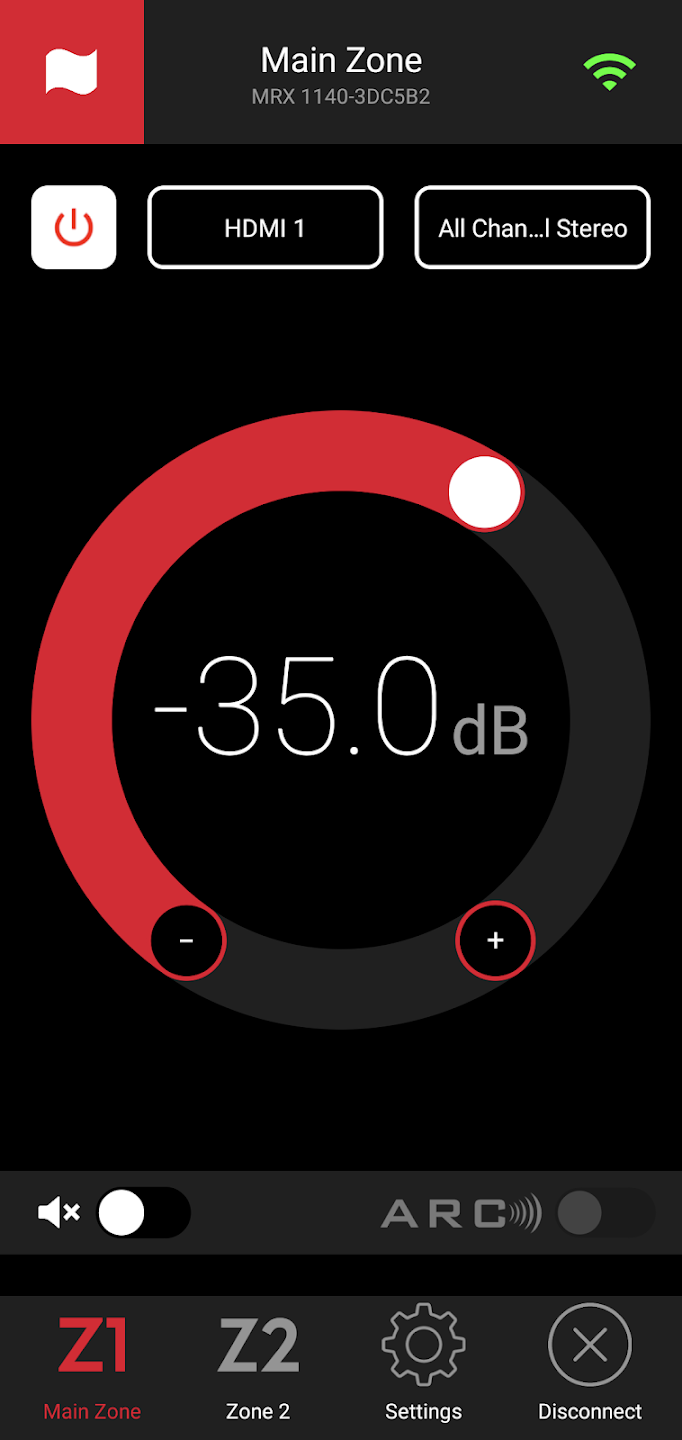

One of the practical advantages of the MRX SLM is that you never need to touch the unit once it’s installed. Whether it’s tucked behind a TV, sitting in a rack, or hidden in a cabinet, day-to-day use happens through your phone, tablet, or laptop. Power, volume, input switching, audio modes, and channel trims are all accessible without hunting through layers of menus. The Anthem Remote App handles all of it over Wi-Fi and does so cleanly. Compared to that, the included plastic remote is as basic as they come—serviceable for quick adjustments, but hardly something you’ll reach for once the app is set up.

The real work, though, happens through ARC Genesis, Anthem’s room-correction system. It comes standard with the MRX SLM and uses the included calibrated microphone to measure your room and apply DSP adjustments. ARC doesn’t try to reinvent your speakers; it simply corrects the room-induced problems that make systems sound inconsistent from space to space. You get options for adjusting the deep bass and high-frequency target curves, support for both Mac and Windows, and the ability to store profiles for different setups or speaker layouts.
ARC Genesis is also backwards compatible with many older ARC- or PBK-enabled Anthem and Paradigm products. I remember using PBK years ago, and the only real hurdle at the time was needing a Windows laptop—a problem when you’ve been in the Apple ecosystem since 1983. Thankfully, ARC Genesis now plays properly with macOS, which makes the whole process much simpler.
The included microphone is all you need to get started, and for most users, the app-plus-ARC combination will be the main way they interact with the MRX SLM. It’s straightforward, reliable, and gives you the control you need without requiring a visible stack of equipment or a degree in system integration.

Listening
2025 has been one for the books—and not a book anyone would option for a prestige drama. More like a Bosch subplot where the detective realizes he’s been ignoring the warning signs until the universe finally clocks him with a two-by-four. In my case: in-patient bipolar care, stomach surgery, and a cardiac event that felt like G-d clearing His throat and saying, “Hey, maybe drop the extra baggage before I drop you.” Message received.
It’s also been a year of transition. I had this romantic idea that owning two homes would give me the best of both worlds. Spoiler: it didn’t. It’s been twice the logistics, twice the headaches, and twice the schlepping. We managed to land a nine-month renter for the Florida house, but the system down there still needs to work, and everything else here in Jersey on the Shore still needs attention.
Trying to figure out where the Anthem MRX SLM made the most sense turned into a minor investigation—complete with hauling center channels and subwoofers back and forth like I was running evidence between precincts.
In New Jersey, I tested it with the Q Acoustics 5040/5090/3030i setup and an older Q Acoustics sub I’ve held onto for years. Down in Florida, the 3050i/3090ci/3020i system and the 3060s subwoofer fill the space. Two houses, two systems, one tired guy trying to keep it all straight. The MRX SLM handled both environments surprisingly well… after I got everything in the right state, zip code, and room.
One thing I’ll say for the MRX SLM: it’s the easiest AVR in the world to travel with. I’ve checked it in my luggage flying to Palm Beach, Newark, and Fort Lauderdale without so much as a raised eyebrow from TSA. It’s basically the size and weight of an extra toiletries bag—just toss it in next to the running shoes and whatever Huckberry outfit I convinced myself I needed that week. No drama, no repacking gymnastics, no “sir, what is this device?” interrogation. If only the rest of my gear were this cooperative.
Am I the only one getting a little worn out by the ever-expanding “Hi-Fi Control Center” that my phone has become? Every AVR, music streaming platform, streamer, wireless headphone, speaker, or room-correction system needs its own app, its own login, its own ecosystem. I get that I’m not the average user—I’m the guy running a Hi-Fi/Home Theater publication and testing gear like it’s an Olympic event—but even I hit a wall. I counted the other day: 25 audio-related apps on my phone. Twenty-five. That’s not an ecosystem; that’s a hostage situation. At some point, your home screen starts looking like an installer’s iPad and you begin questioning life choices.
Having used Anthem’s ARC system before, I didn’t have much of a learning curve this time, but if you’re new to it, be realistic: this isn’t a quick-hit calibration. A CI pro is absolutely worth considering if you’re not fully comfortable, because ARC’s results depend on getting the setup right. Still, it’s worth learning—just don’t expect to be finished in 30 minutes. Give yourself an hour or more and treat it as part of the installation, not a box to tick at the end.
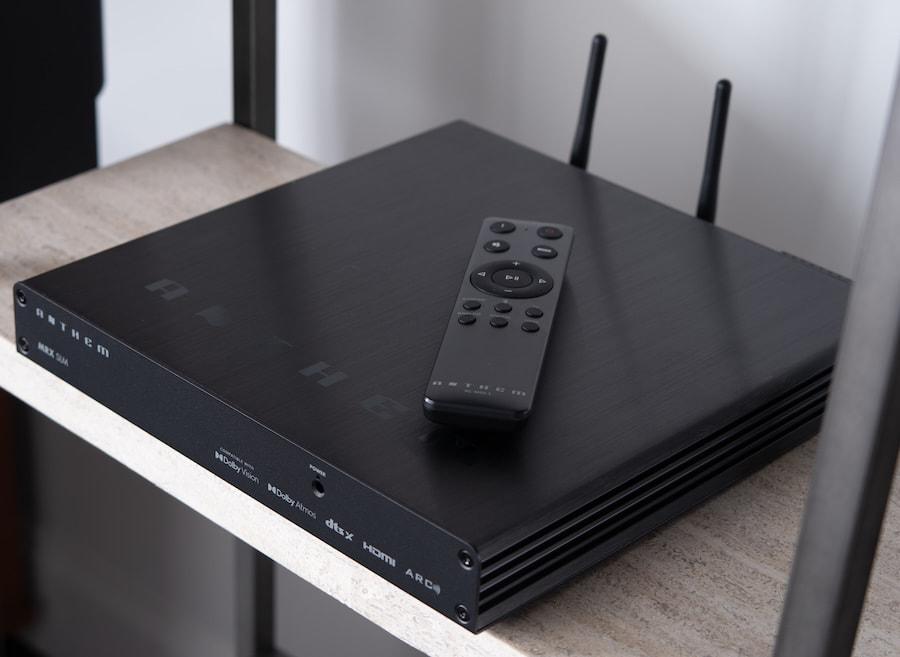
And keep this in mind: your experience will be very different if you’re using in-wall or in-ceiling speakers. With traditional speakers, you can fine-tune placement to help the room work with you. With CI speakers, what’s in the wall is in the wall. You’re not moving anything. Every speaker interacts with a room differently, and with CI setups, ARC becomes even more important because it’s compensating for fixed positions and room reflections you can’t physically adjust. ARC isn’t magic, but in this context, it’s doing a lot of the heavy lifting.
I always start with music first. Using Qobuz and TIDAL, I went straight to the artists I rely on to check tonality, clarity, and those trouble zones in the upper bass, lower mids, and treble. The usual suspects: Nick Cave, Sam Cooke, Amy Winehouse, Sarah Vaughan, Sia, Seinabo Sey, and Terry Callier. They each reveal something different—where the system leans warm or sharp, how it handles vocal texture, and whether any part of the frequency range decides to wander off the reservation; like the Eagles’ offense on Sunday night against the Cowboys.
The MRX SLM doesn’t lean warm, thick, sharp, or bright—it sits squarely in neutral territory, and nobody is going to mistake it for a laid-back solid-state design or a tube amp with rolled-off edges. It’s clean without crossing into that overly lean territory some Class D amps fall into. The upper bass and lower mids stay tidy, with no bleed or smearing. Male vocals could use a touch more warmth and texture, sure, but they’re still presented with good clarity and openness.
Using two Q Acoustics systems I know extremely well made the differences easy to spot. The 3050i has a thicker, warmer balance with a softer treble, while the 5040 is more transparent, quicker on its feet, and has noticeably more air and bite up top. It’s the more revealing speaker and will happily tell you when an amp is too sharp or too sleepy. The Anthem just lets each speaker sound like itself. No added gloss, no EQ tricks—just the honest tonal balance of the system in front of it.
Sia and Amy Winehouse couldn’t be more different as vocalists, but both have a way of getting under your skin for completely opposite reasons. Winehouse’s “Valerie” in particular can get aggressive fast, and if a tweeter is even slightly hot, it’ll rat you out within seconds. With the MRX SLM, the usually sleepy 3050i woke up a bit, sounding more alert and controlled, while the 5040 stayed very linear and composed.
A touch more warmth wouldn’t have hurt in this setup, but the trade-off was a bass range with real solidity. Not “shake the walls” impact—you’re not getting that from a slim Class D amp with limited power reserves—but the low end had weight and presence that never felt thin or hesitant. Pretty respectable for something this compact.
Electronic music was surprisingly well served by the Anthem. It has the speed and snap you want for anything with a pulse—Daft Punk, Boards of Canada, Kraftwerk—all came through with the right mix of propulsion and spaciousness. Even without the subwoofer in play, the 5040 managed to energize my 16′ x 13′ x 9′ den more effectively than I expected. The MRX SLM kept things tight, focused, and rhythmically locked in, which isn’t always a given with compact Class D designs.

Movies, TV & the Upside-Down: How the MRX SLM Handles Real-World Viewing
The eARC implementation on the MRX SLM was refreshingly uneventful—in the best way. It worked with every compatible TV I tested: LG, Samsung, and Hisense. Zero handshake drama, zero audio dropouts, zero “why isn’t this working?” moments. I ran both my Panasonic and Magnetar 4K Blu-ray players into each TV and then fed audio back into the Anthem via HDMI, and the whole chain behaved exactly as it should. I also connected my WiiM Pro Plus and Cambridge Audio CXN100 network players directly into the MRX SLM without any fuss.
Neither of my setups has proper height channels or anything beyond a straightforward 5.1 configuration, so Atmos-in-the-sky wasn’t part of the equation. Still, for what I’m running, the Anthem slotted right in and kept the experience consistent in both homes.
And yes—”Stranger Things” is still a guilty pleasure in my household. Hard not to lean into it when you’ve got a 19-year-old with full Steve Harrington hair (and thankfully a lot more brainpower—University of Delaware Mechanical Engineering), plus my longtime teenage crush on Winona Ryder, and a personality that lives somewhere between Hopper’s gruff realism and Murray’s unhinged charm. What’s not to like, Comrade?
The MRX SLM was more than adequate with both setups. Could it use a little more power? Sure. But in real-world rooms—and especially in the under 16′ x 13′ x 9′ category—it’s unlikely anyone is running the kind of hyper-demanding speakers that need a big iron 100-watt-per-channel amp. People who do that already have a dedicated theater, real amplification, and the kind of “we’re not totally sure how much power you get once all the channels are lit up” AVR math that nobody believes anyway.
I’ve always leaned more toward 3.1 (or even 2.0) for movies, mostly because I’m deep into film noir and older films from the ’40s through the ’70s—eras when surround sound wasn’t part of the vocabulary. For that kind of material, clarity, tonality, and dialogue matter far more than raw multi-channel horsepower. And the MRX SLM handles that just fine. It doesn’t pretend to be a muscle amp—it just does the job cleanly, consistently, and without getting in the way of the story.
Blade Runner, John Wick, Lethal Weapon, Throne of Blood, Dr. Strangelove, and Jurassic Park all passed with flying colors on the MRX SLM. The presentation was clean, controlled, and appropriately dynamic for a compact Class D AVR. But let’s be honest—you absolutely need a subwoofer for Keanu’s mayhem or Dr. Ian Malcolm’s “life finds a way” thunder. The Q Acoustics speakers can’t deliver true low-octave authority on their own, at least not the kind that rattles china or makes the room shudder in that satisfying “this might be a bad idea” way. With a sub in the system, the SLM holds its own; without one, you’re not getting the full impact these films deserve.
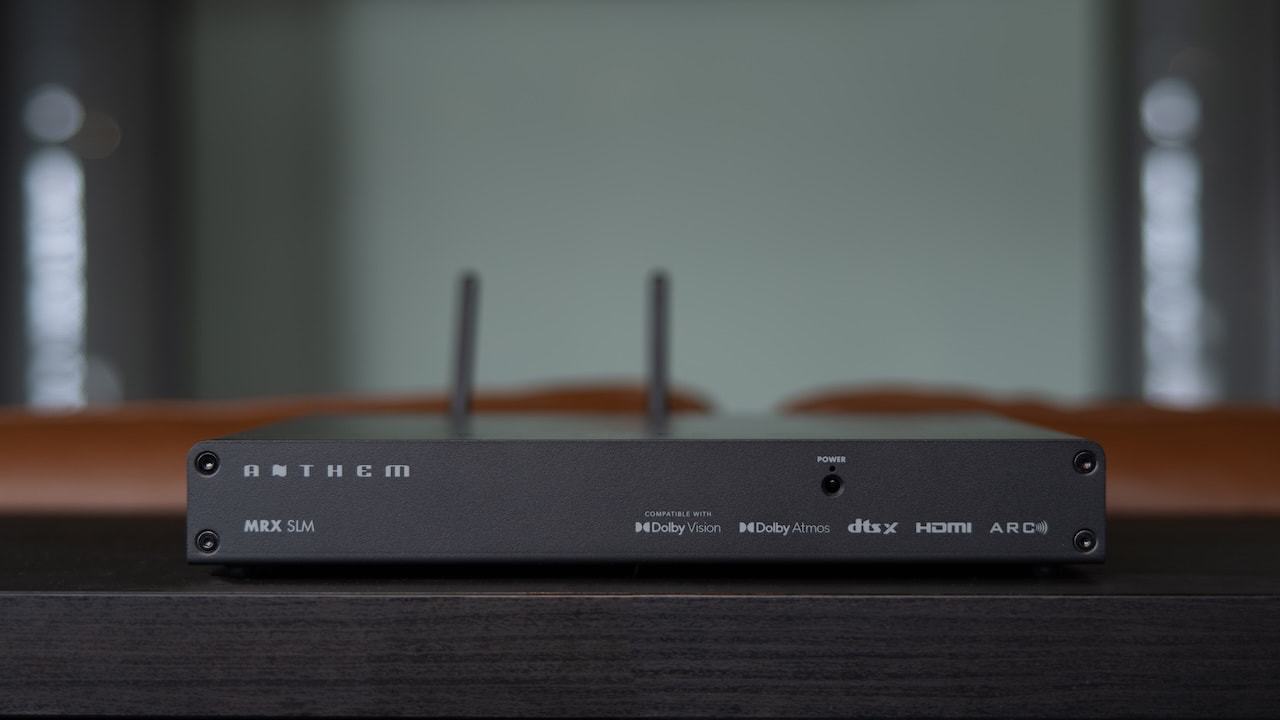
The Bottom Line:
The Anthem MRX SLM is a purpose-built, ultra-slim AVR that delivers real Anthem performance in places where a traditional receiver simply doesn’t fit. Its Class D amplifier is clean, neutral, and more composed than its tiny footprint suggests. ARC Genesis adds legitimate room-correction muscle—especially critical for in-wall and in-ceiling speakers where placement isn’t up for debate. eARC works without handshake drama, HDMI behaves itself, and wireless support (AirPlay, Chromecast, Spotify Connect) keeps it modern without overcomplicating things. For something this compact, the feature set is far more complete than expected.
It’s not a brute-force amp and doesn’t pretend to be one. If you’re trying to drive massive floorstanders at reference levels, this isn’t your AVR. But in bedrooms, dens, condos, cabins, guest suites, and any space where the electronics need to stay invisible, it lands in the sweet spot. Installers will appreciate the Phoenix-style connector, rock-solid CI integration, and predictable behavior. Enthusiasts—especially those managing systems across multiple homes—will appreciate how consistent and easy it is to operate through the app.
Pros:
- Ultra-slim design fits behind TVs, in cabinets, or directly into a wall
- Clean, neutral Class D amplification without the lean edge some Class D designs exhibit
- ARC Genesis included with calibrated mic for meaningful room correction
- Rock-solid eARC performance with no handshake issues
- Full modern streaming suite: AirPlay, Chromecast, Spotify Connect, Bluetooth
- Phoenix-style connector simplifies CI installs
- Strong integration support (Savant, Crestron, Control4, URC, RTI, ELAN)
- Easy to manage through the Anthem app and web interface
- Lightweight—actually travel-friendly if you’re running multi-home setups
- Ideal match for in-wall/in-ceiling or modest floorstanding systems
Cons:
- Limited power reserves compared to full-size AVRs
- Only one HDMI input (though eARC mitigates this for many users)
- Basic plastic remote—functional but forgettable
- Not intended for large rooms or highly demanding speakers
- Requires time and patience to get the most from ARC Genesis
- Phoenix connector means thick audiophile cables are a no-go
Where to buy:
For more information: anthemav.com
Related Reading:
- Paradigm and MartinLogan Acquire GoldenEar
- Denon A-Series A/V Receiver Buying Guide: Which Flagship AVR Is Right For You In 2025?
- Which Marantz AVR Should You Buy? Our Guide To The Best Marantz A/V Receivers In 2025
- Fear And Loathing In Class D Amplifiers: What $130 To $50K Actually Buys You




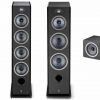








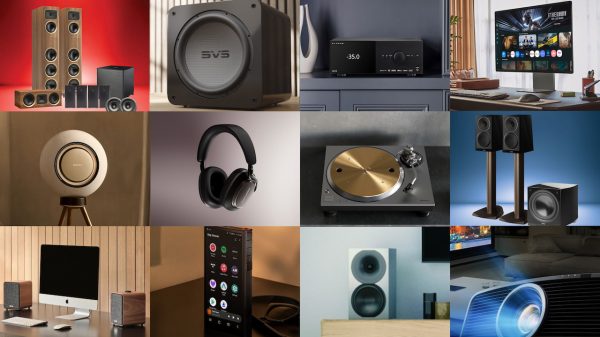


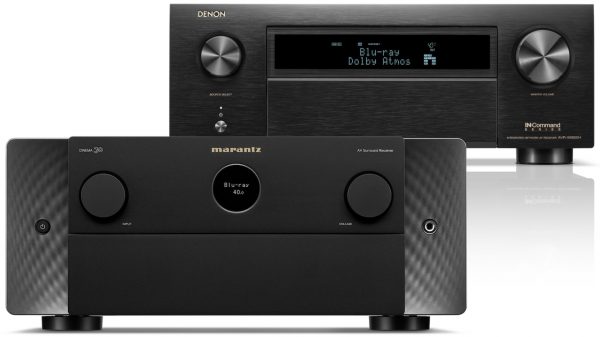



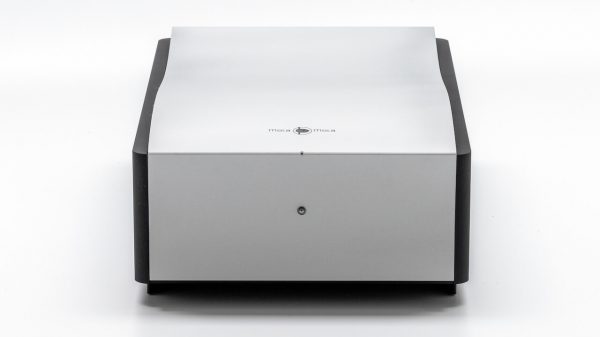

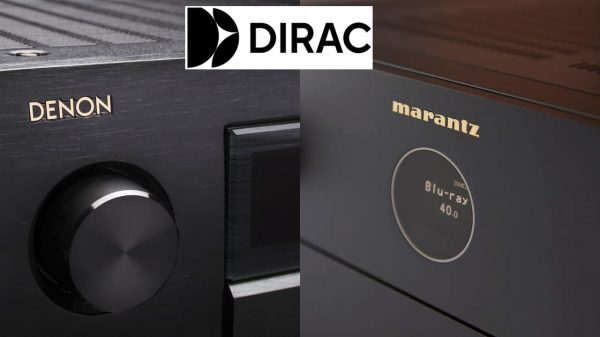


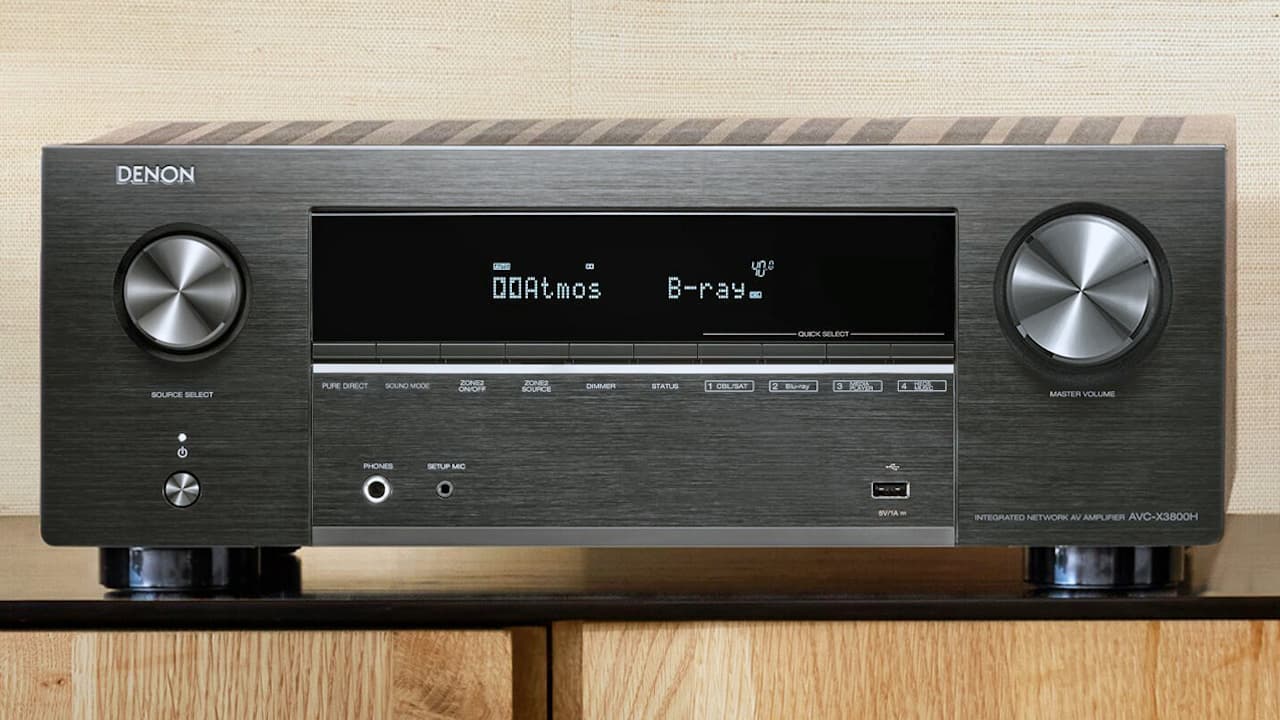











Anton
November 24, 2025 at 10:40 pm
Very comprehensive and solid review. I would consider this over the similar product from Naim that only does 2-channel.
Anthem has always made superb equipment. Not cheap but you get what you pay for.